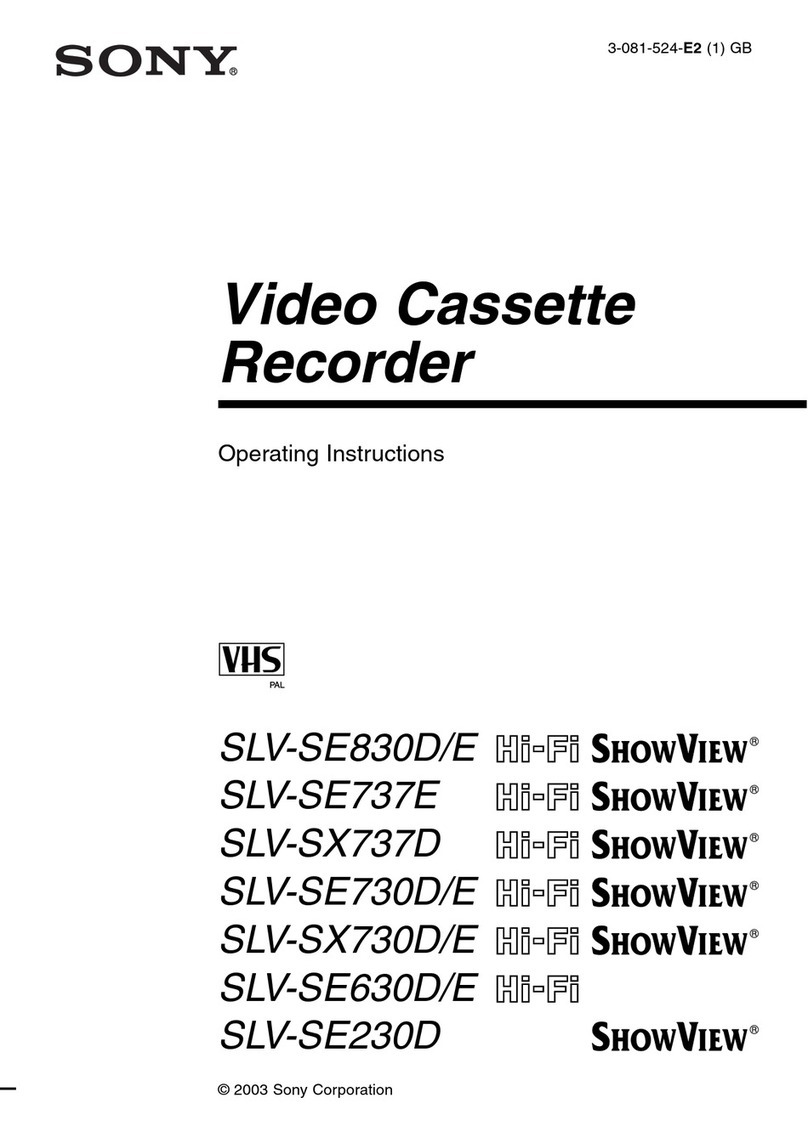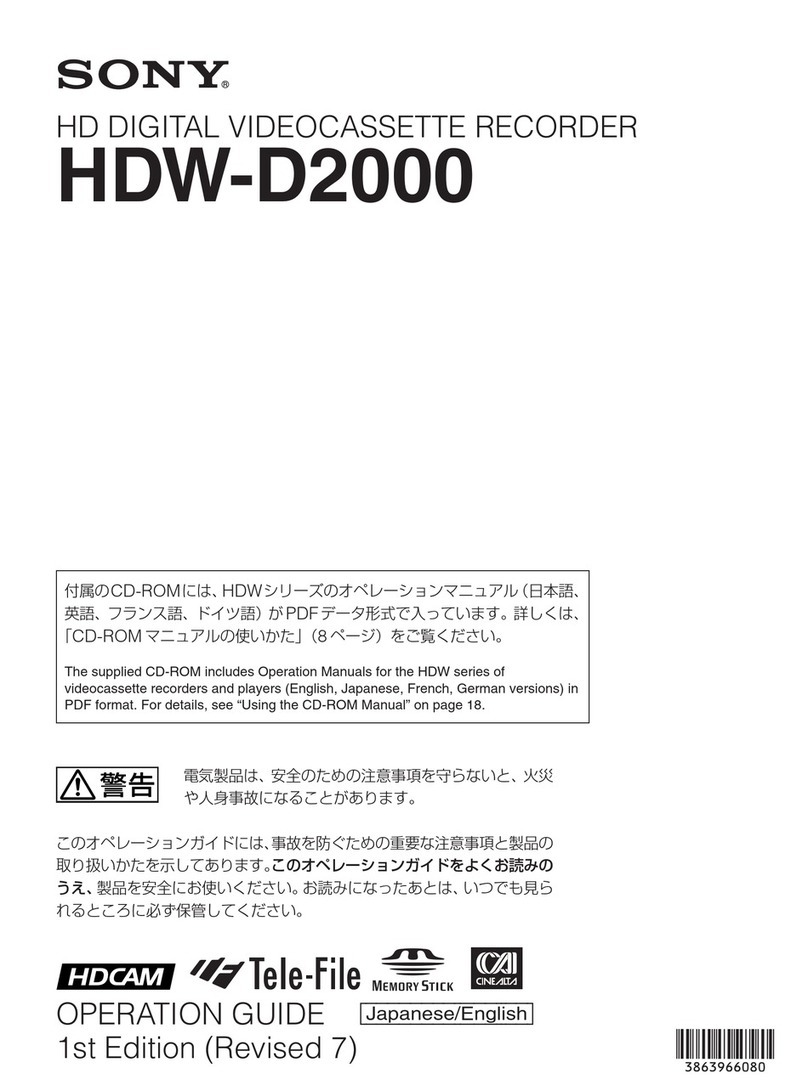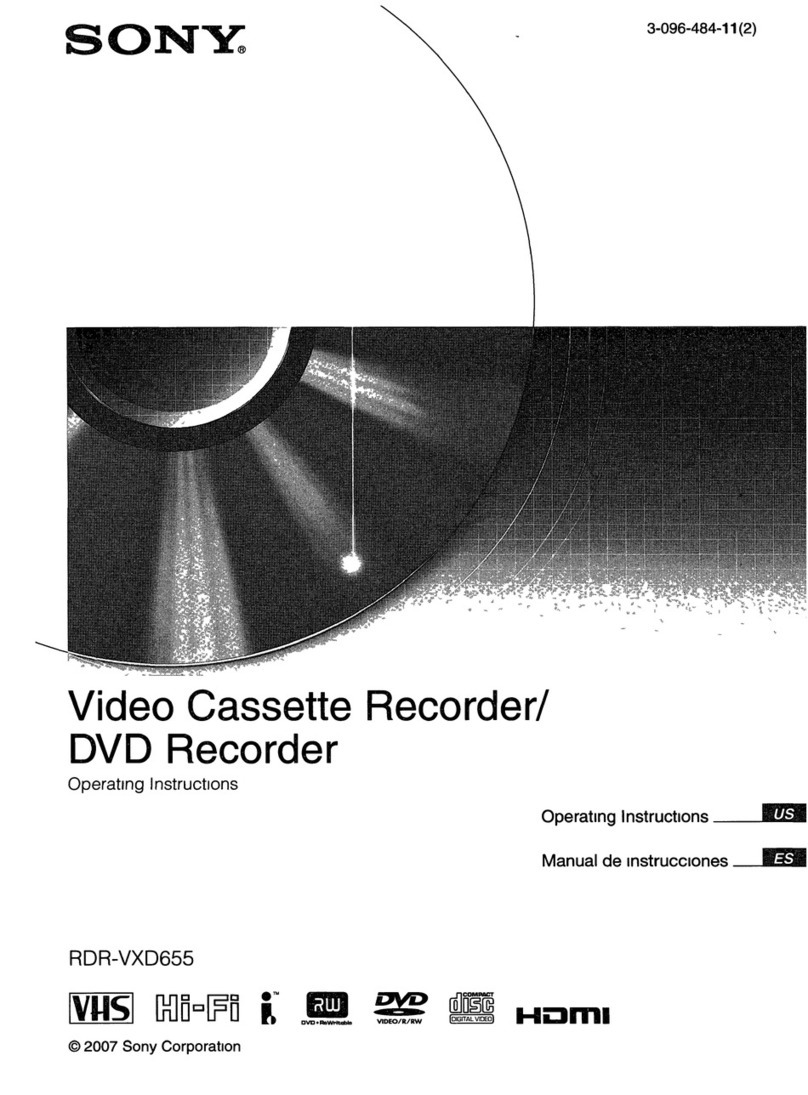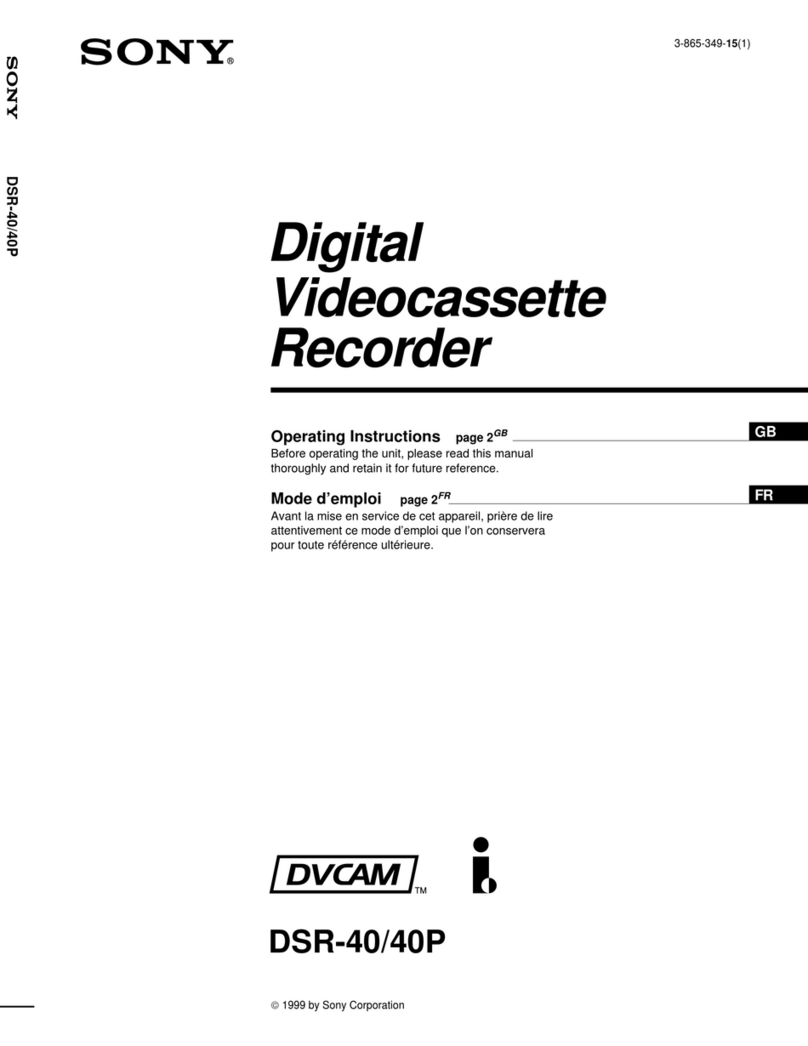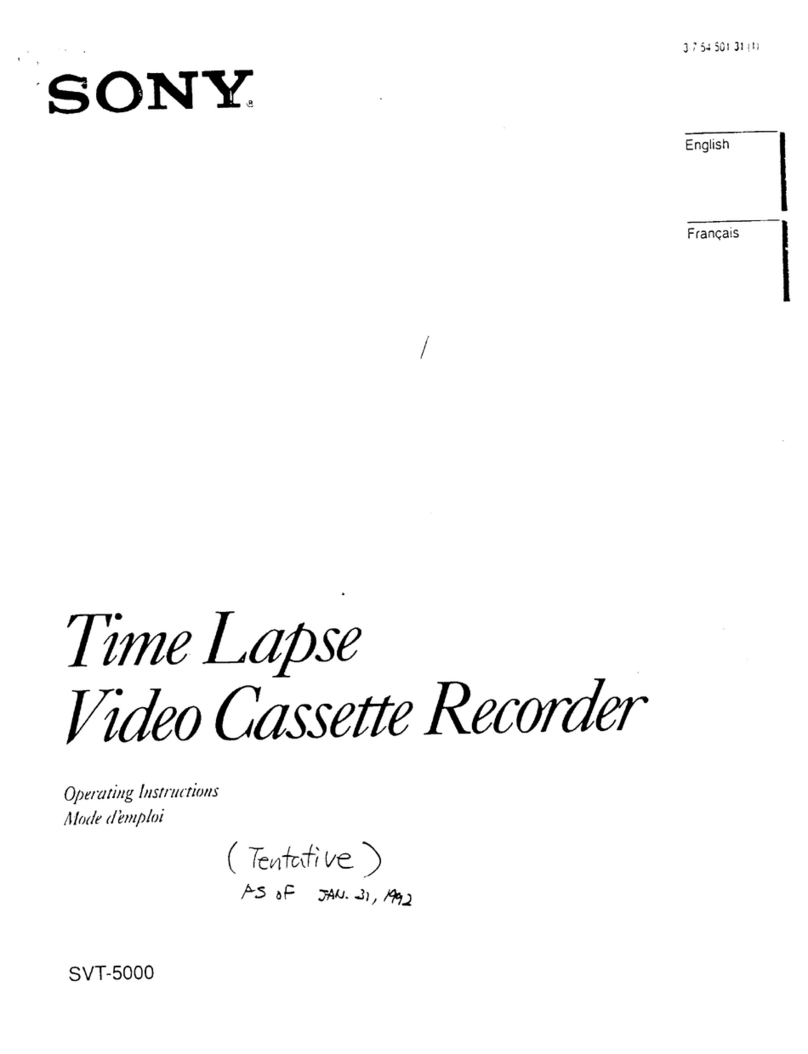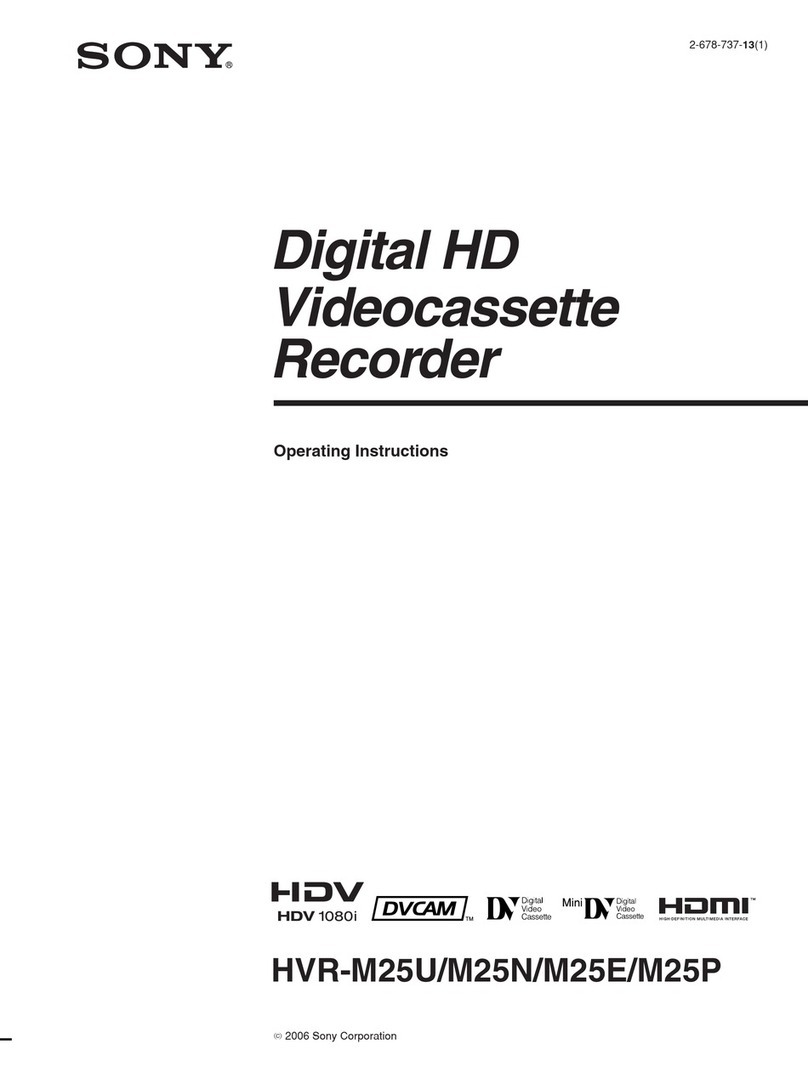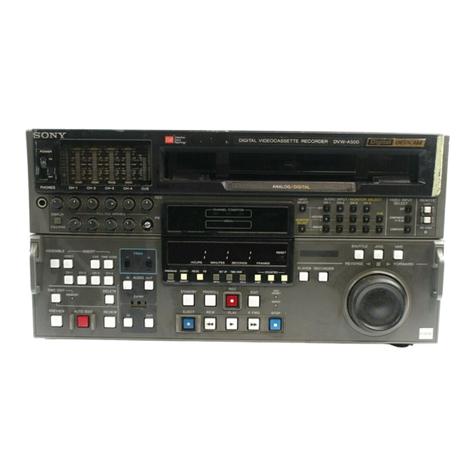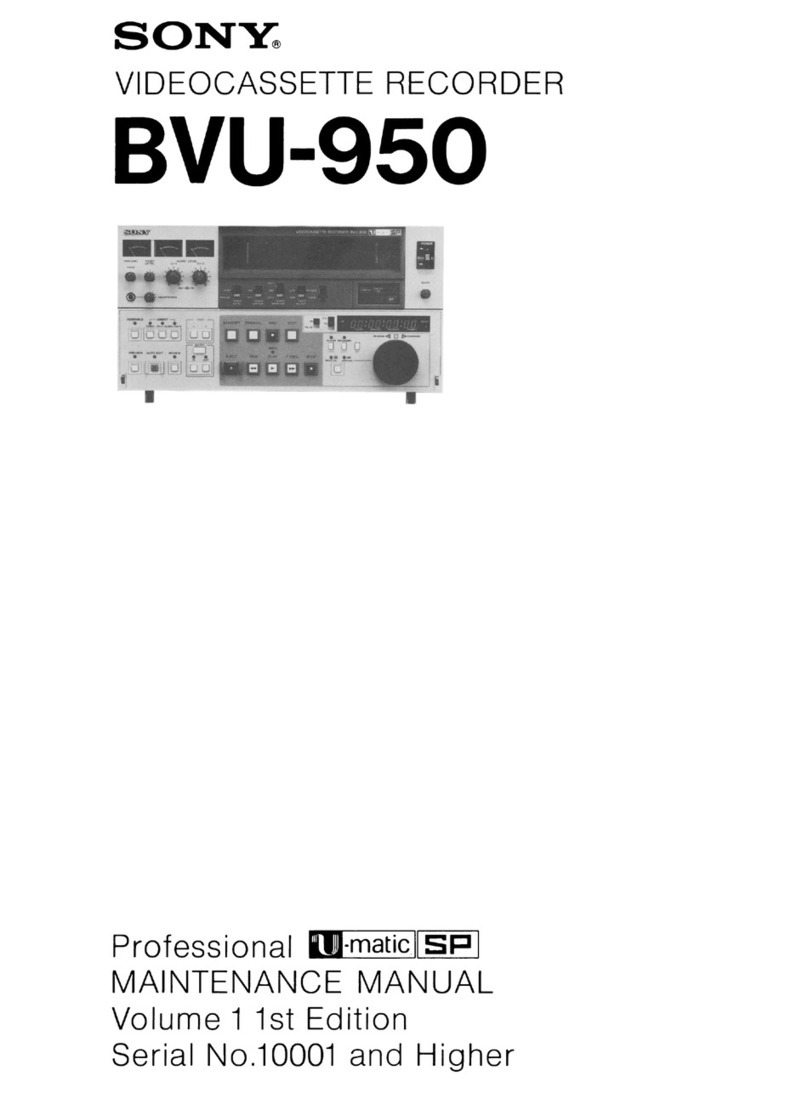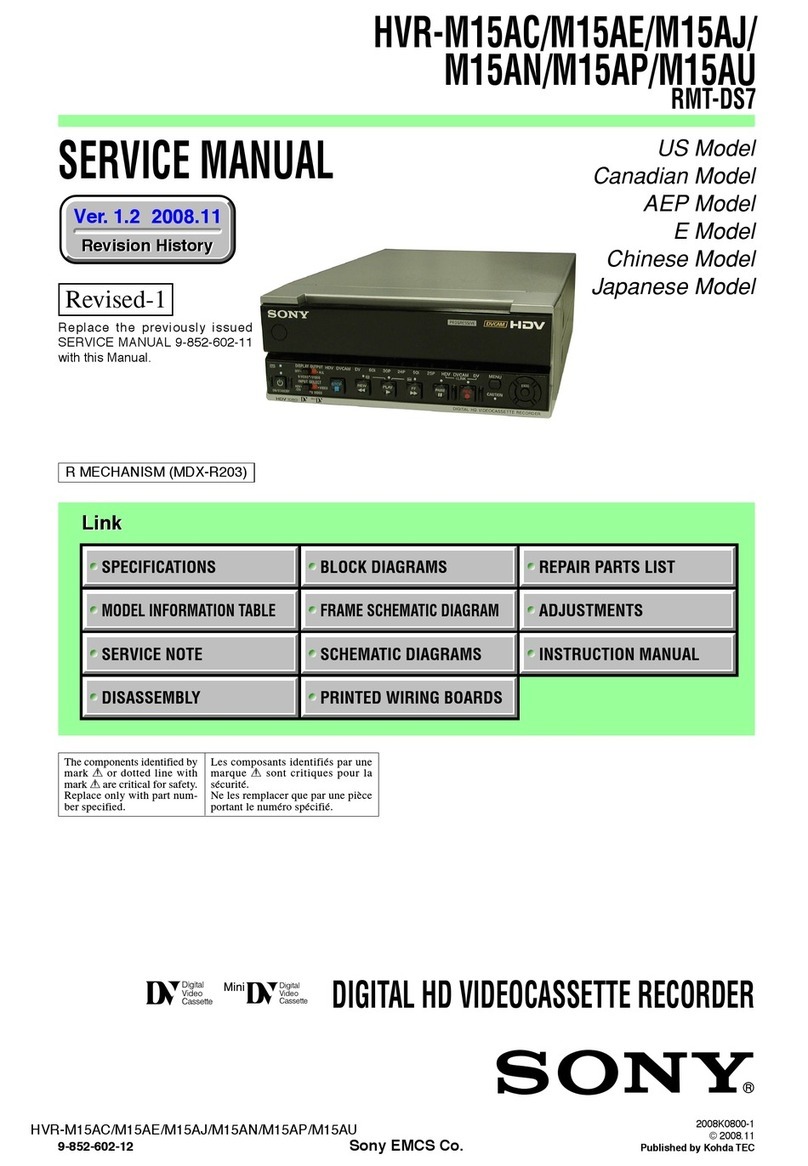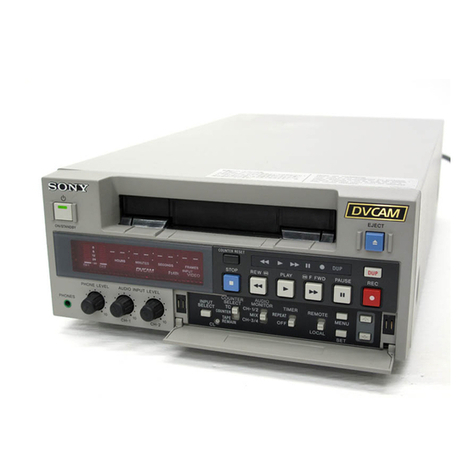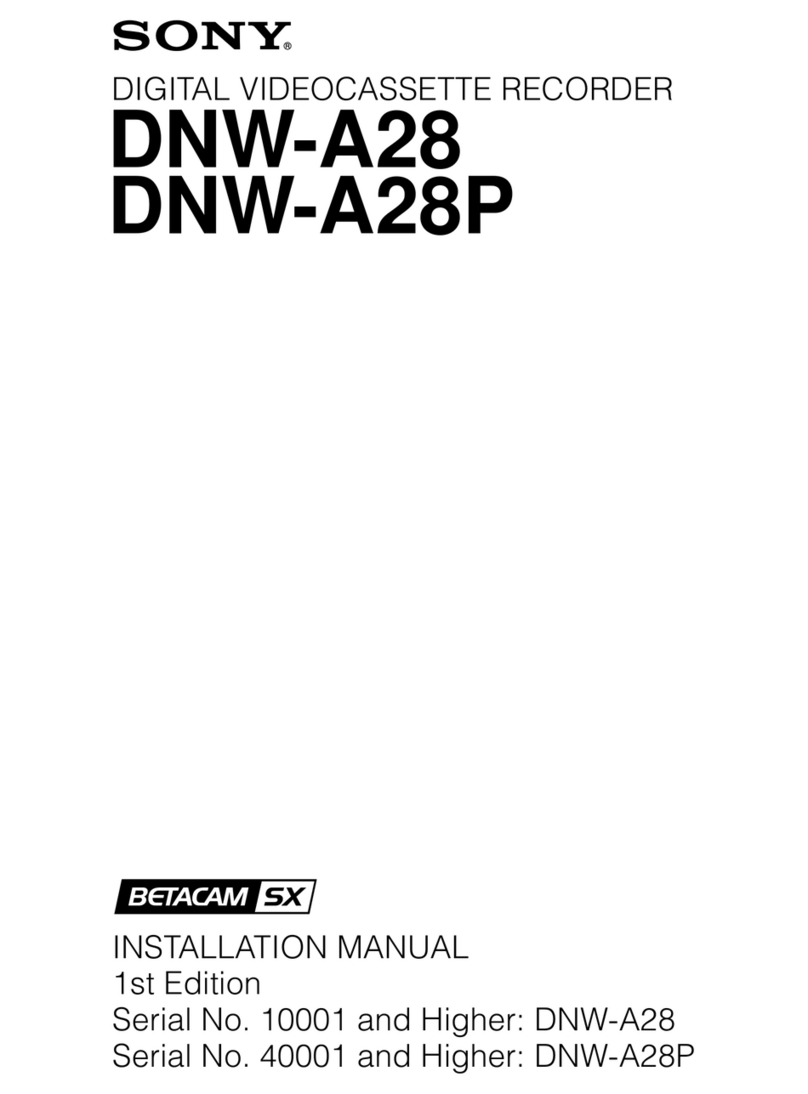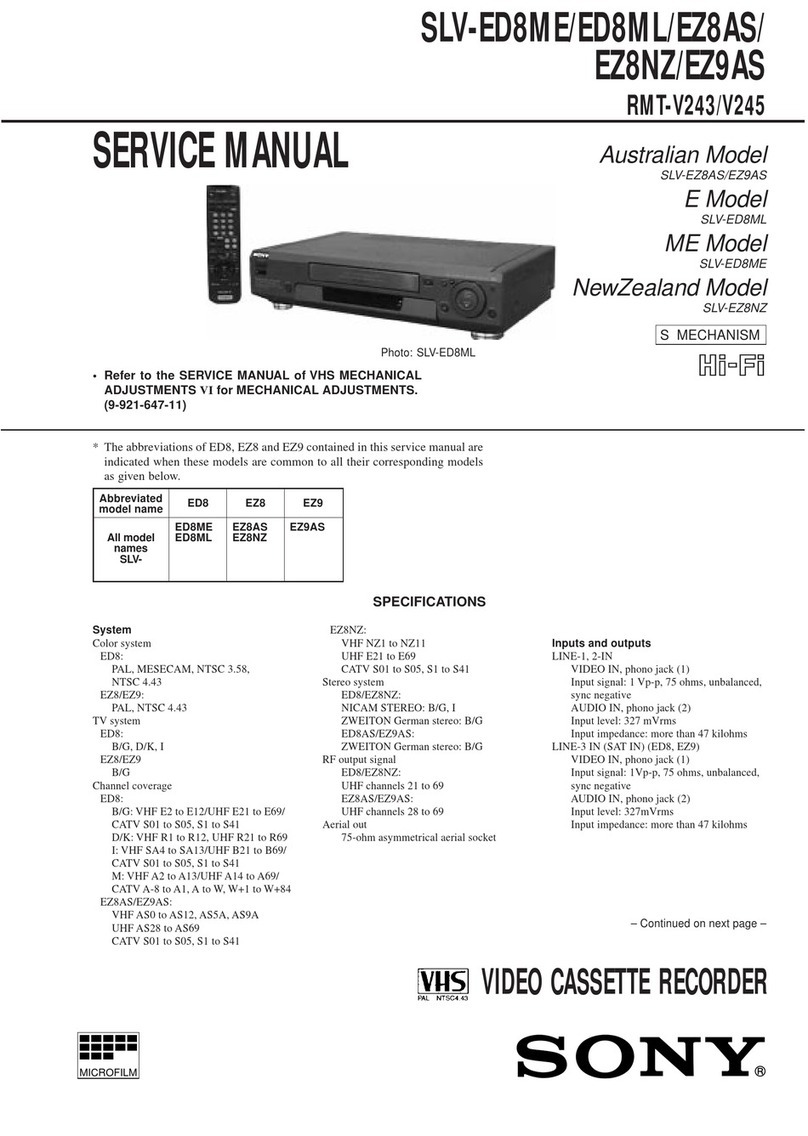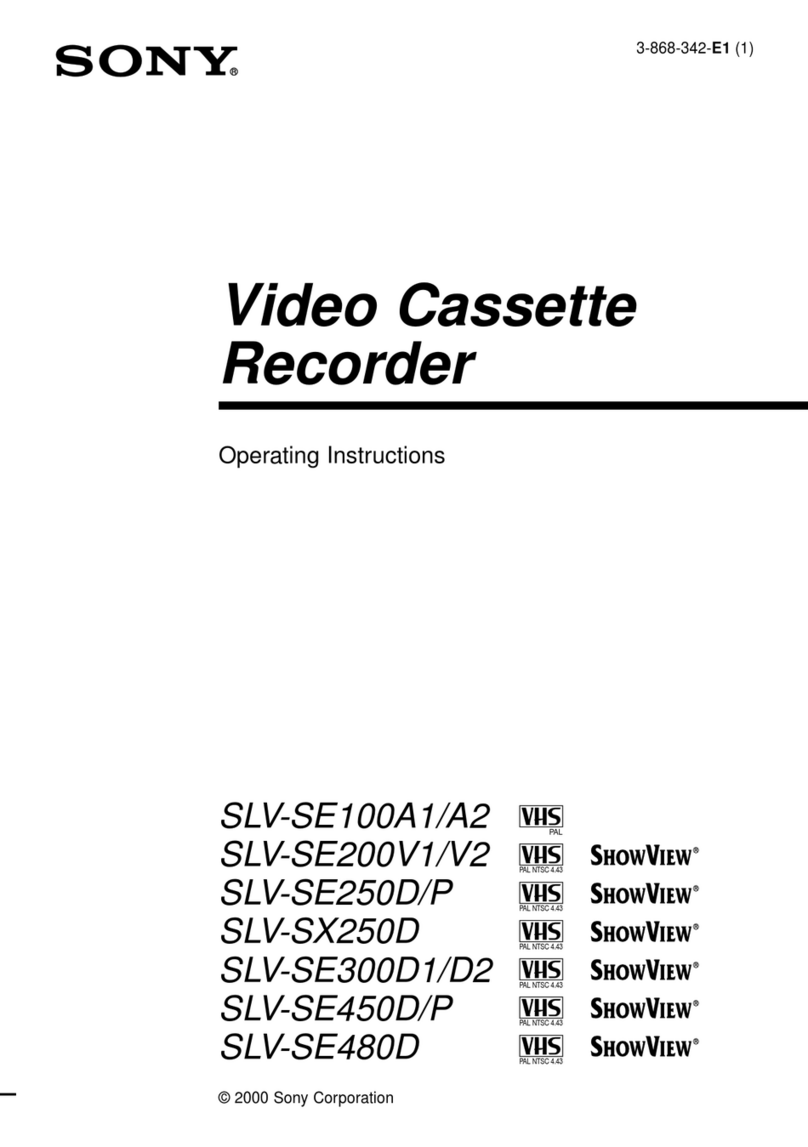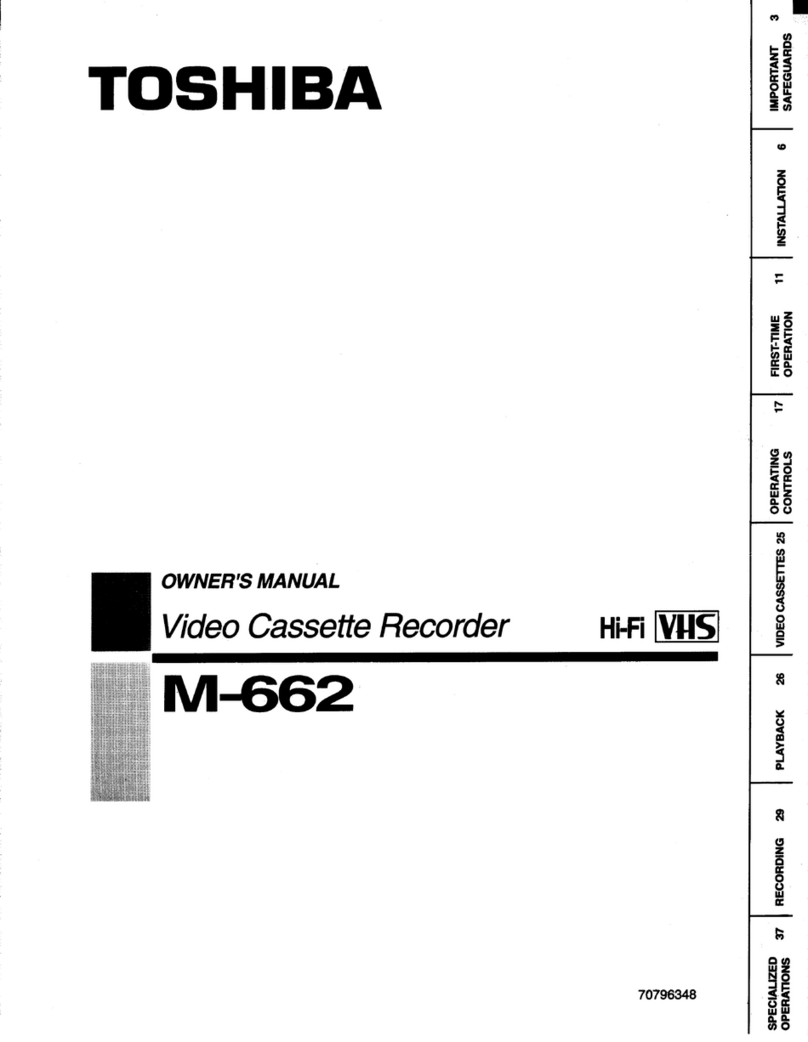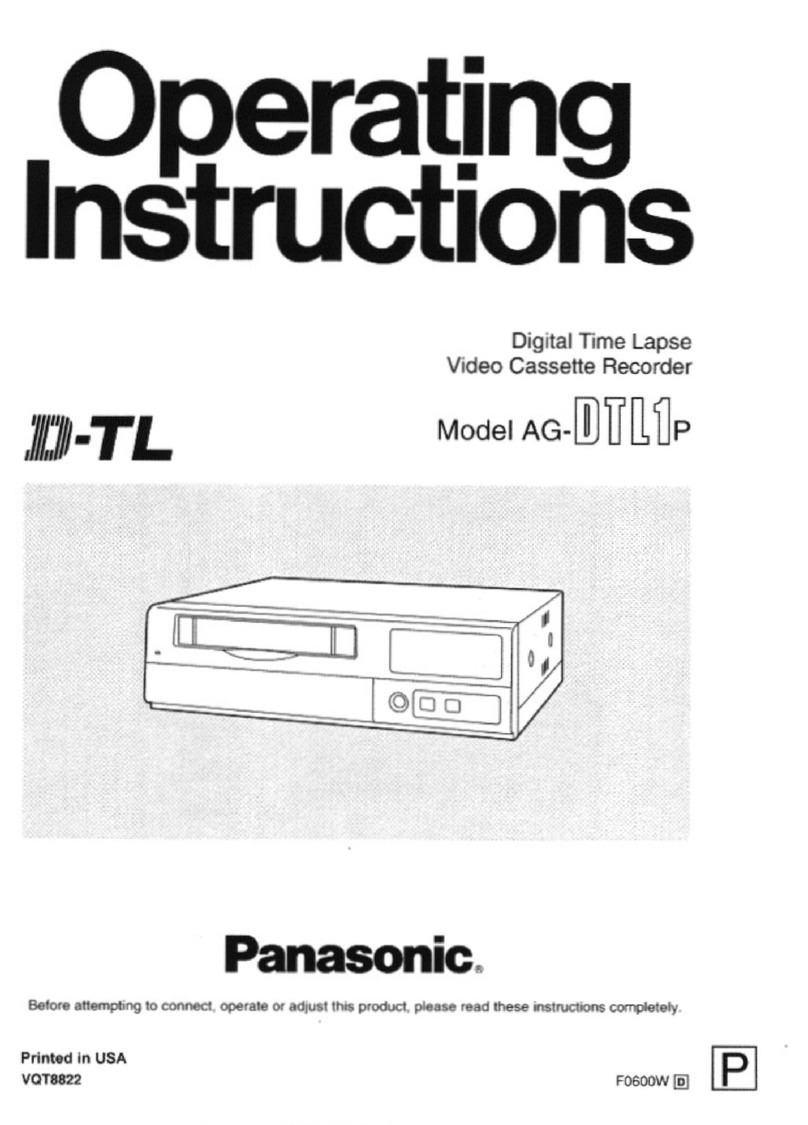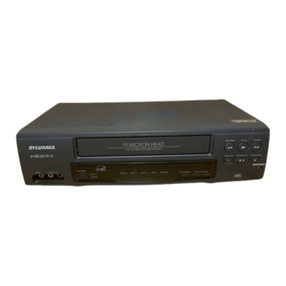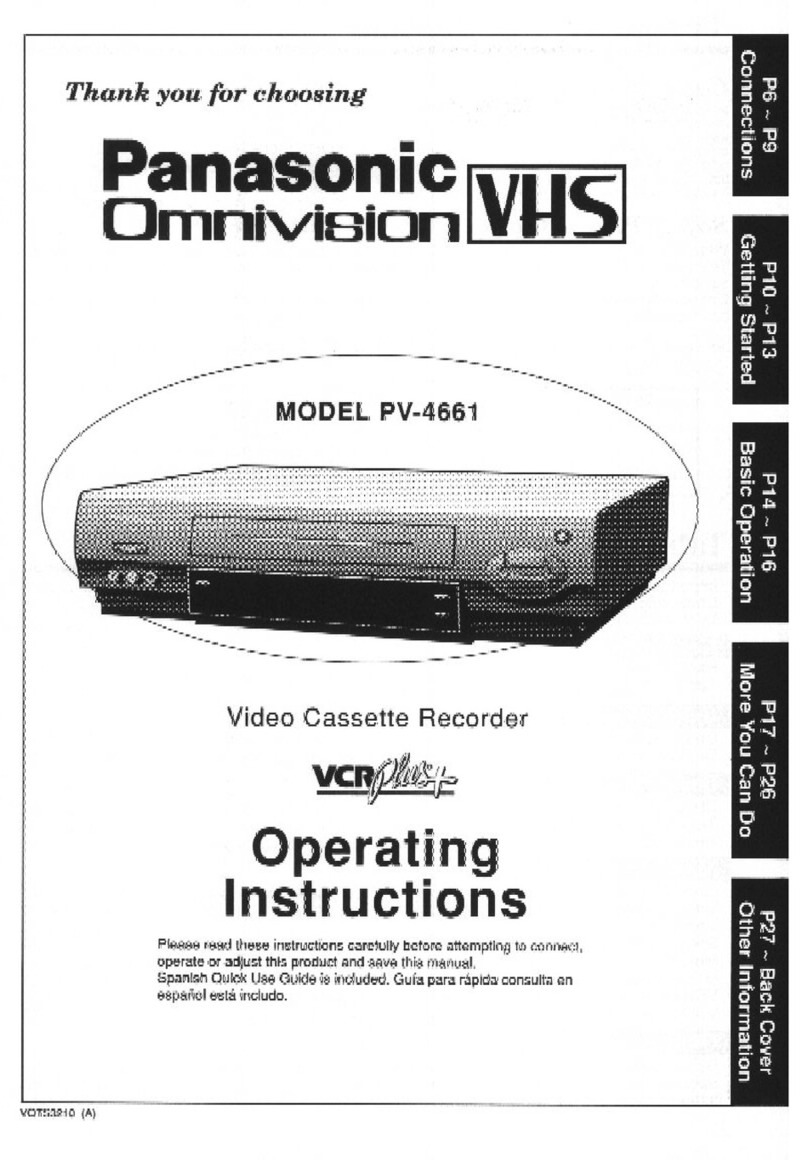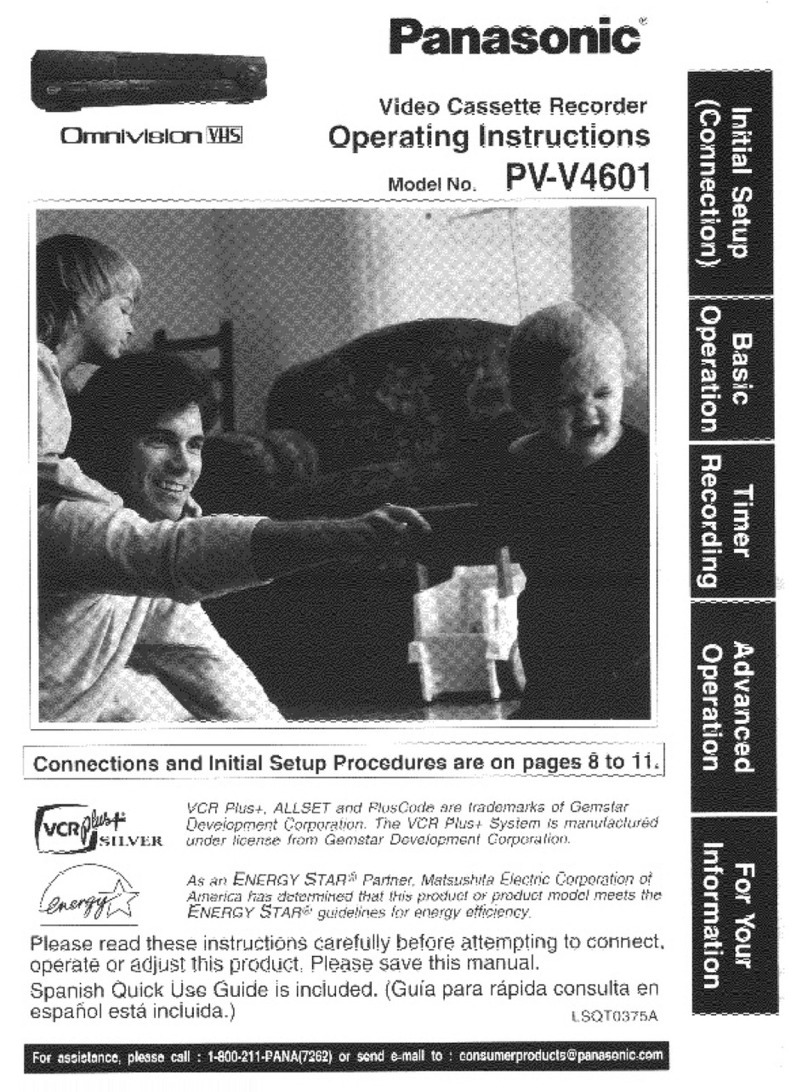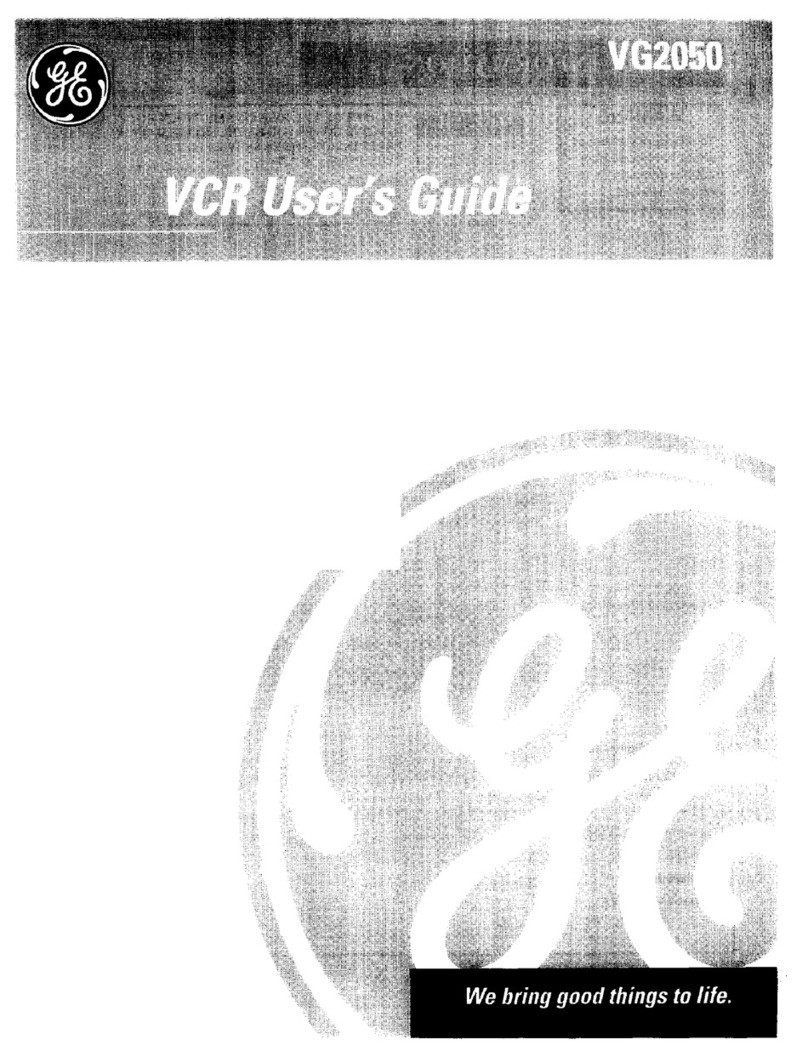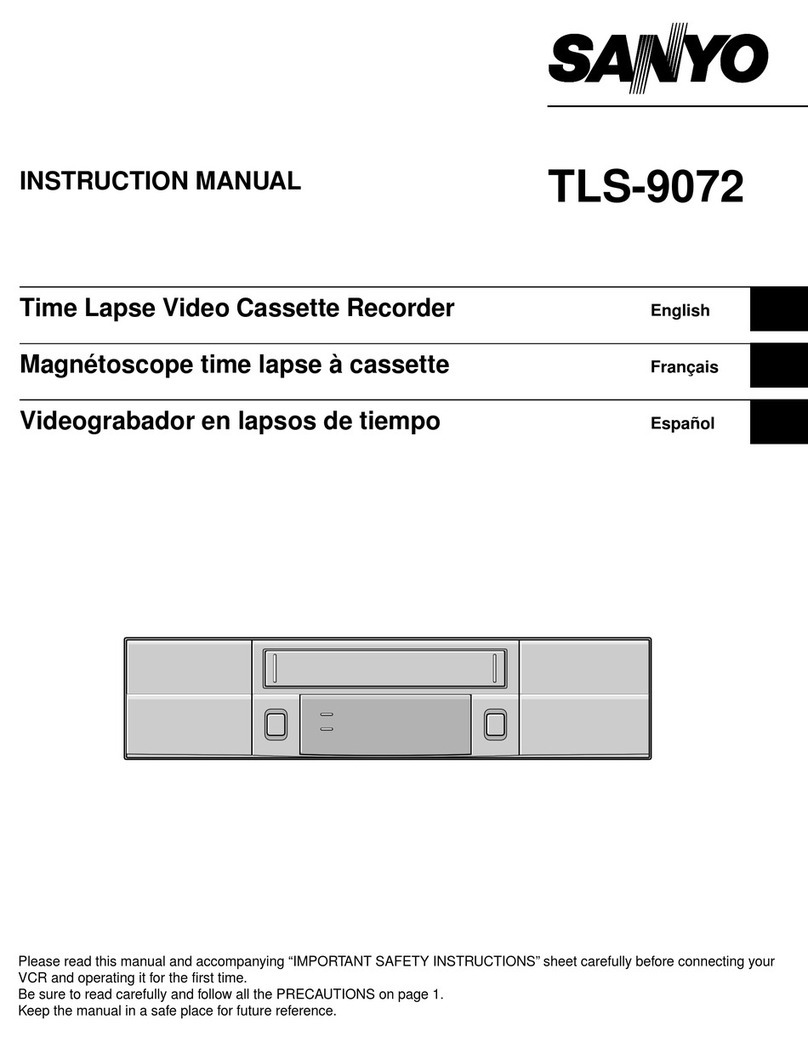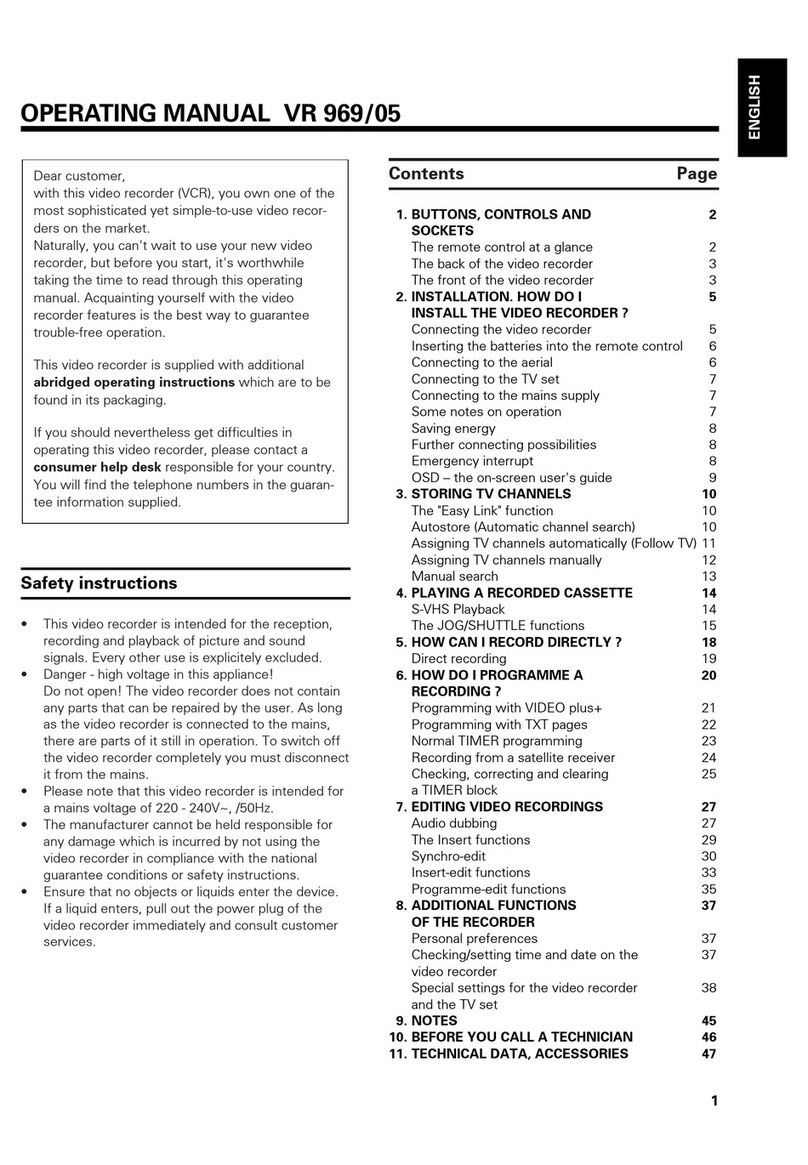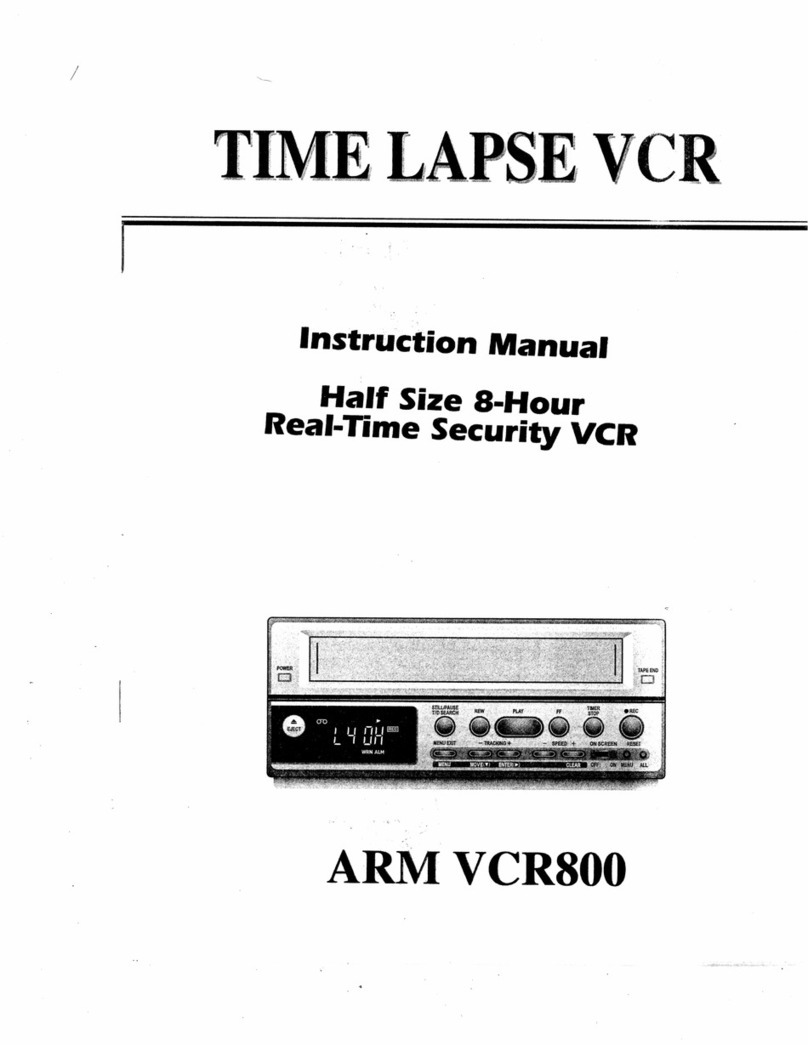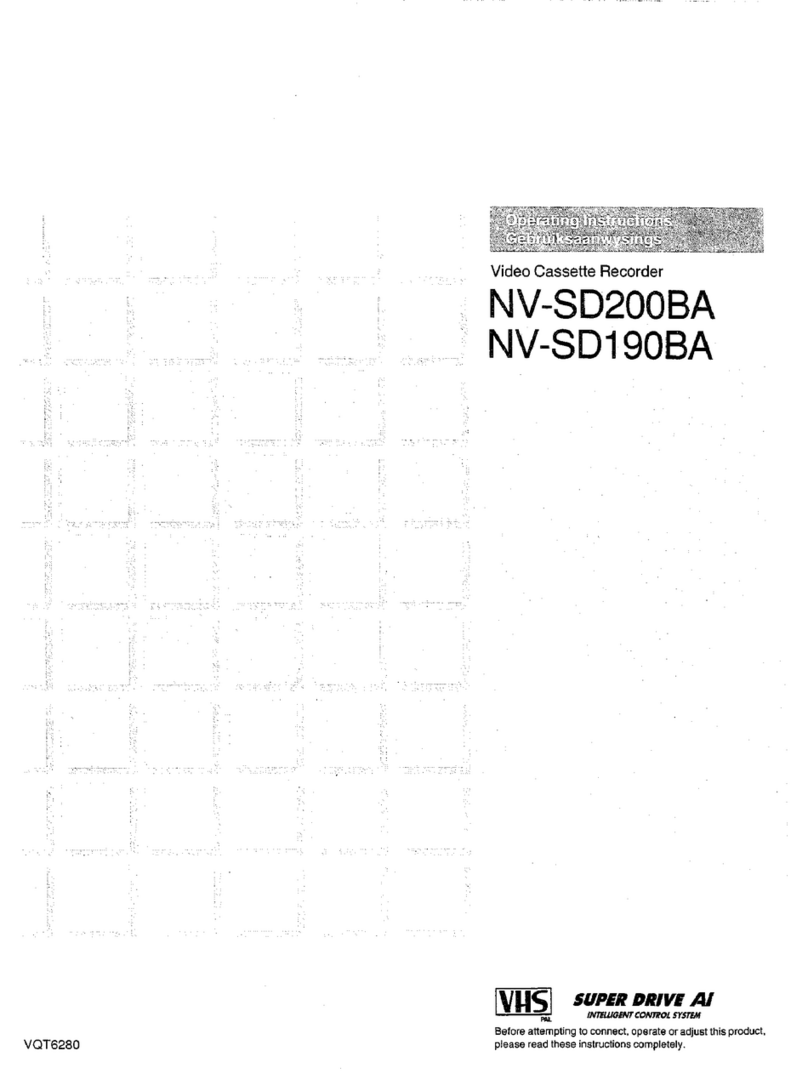回
RESET
button
Whenthe COUNTER/TC/DIAL MENU
selector
回
is
set
to the COUNTERposition and the time counter display
困
shows
the time period of the tape travel, press to
reset the time counter to
0
・
00:00:00.
回
POWER
switch
回
HEADPHONES
connector (stereo phonejack),
HEADPHONESLEVELcontrol
圃
MICROPHONES
CH‑1 and
CH
・
2
connectors
(phone jacks)
回
MONITOR
OUTswitch
Select the sound to be monitored through headphones
or aspeaker of avideo monitor
The sound selected by the OUTPUTSELECTswitch on
the subpanel is selected as follows:
Tohear the channel‑1 sound only
Tohear the sounds both on channels 1and 2*
Tohear the channel‑2 sound only
* Whenstereo headphones are used, the sound of
channel 1will be heard from the left unit and the sound
of channel 2from the right unit. Whenamonitor
speaker connected to the MONITORAUDIOor TV
connector is used, mixing sound of both channels 1
and 2will be heard
回
Search
button
Press to put the unit in the search mode, and the search
operation with the search dial in jog or shuttle modewill be
possible.
If the setting of the dial menu number 209 is changed, the
unit enters the search modewithout pressing the search
button.
See “Dial MenuOperation" for
details
目
国
Search
dial andSHUTTLE/JOG lamps
Functions as asearch dial for quickly locating edit points
or as aselector for the dial menuoperation according to
the setting of the
COUNTER
庁
C/DIAL
MENU
selector
回.
Setting Function
COUNTERor Search for ascene.
TC
DIAL MENU Dial menuoperation
1‑3
Thedetails of the function are as follows:
Search for edit points
Set the COUNTER/TC/DIALMENU
selector
回
to
COUNTERor TC, and press the search
button
回
The
search dial can makethe tape run in jog or shuttle mode
Push in to change from the shuttle modeto the jog mode
and push it in again to change back. Thecorresponding
lamp lights to showthe current mode. Rotate the dial
clockwise to run the tape forward (the .... FORWARD
lamp lights), and counterclockwise to run the tape in
reverse (the REVERSE
~
lamp lights)
Whenthe tape stops,
the
圃
lamp
lights
SHUTTLE Set the dial to one of 16 positions to run the
tape at aspeed from 1/30 to 19 times
normal speed in forward direction, andfrom
1/30 to 17 times normal speed in reverse
direction. Astill picture is obtained at the
center detent position
JOG Thedial turns freely. The tape runs at a
speed from 0to 1times normal speedwhile
the dial is
rotated
目
When
the dial is stopped, I
astill picture is obtained. 1
E
図書
Whenplayback at slow speed less than 1/2 time
normal speed continues for about 30 seconds in
shuttle or jog mode, the playback automatically stops
Dial
円、
enu
operation
Set the COUNTER/TC/DIAL MENUselector to DIAL
MENU. Rotate the dial while pressing the MENU
button
固
or
the DATA
button
固
to
set characters or
numbers on the display.
See“Dial Menu Operation" for details.
回
REMOTE/LOCAL
selector
Usethis selector to control this unit with other equipment
connected to the REMOTE1(9P) connector on the rear
panel.
Thefunctions are controlled as follows:
REMOTE Set to this position whenyou want this unit to
be controlled by the unit connected tothe
REMOTE1(9P) connector (9‑pin).
With this selector set to REMOTE, none of the
operation buttons for tape travel, except for
the STOPand EJECTbuttons, will function.
LOCAL Set to this position to operate this unitalone

